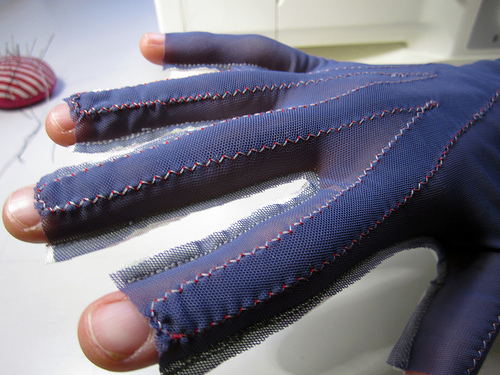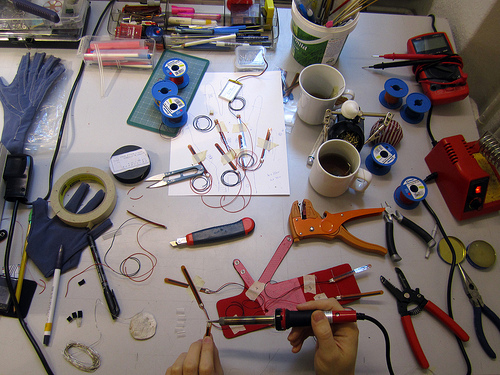Introduction
An Open Hardware pair of datagloves developed as part of the Mi.Mu Gloves for Music project. These musical gloves are both an instrument and a controller in effect, designed to connect the user fluidly with gear performers usually use, such as Ableton - think minority report for musicians brought to you by the DIY/maker revolution.
This DIY version of he gloves are made from off-the-shelf parts and documented in step-by-step instructions. Bend sensors in the fingers of the glove and the Arduino Inertial Measurement Unit (ArduIMU) module mounted on the cuff capture movement and gestures of the hand and send this information via Serial communication to a computer. The data is interpreted by the custom software Glover, and forwarded to Music software as Open Sound Control (OSC) messages. The gloves also include an RGB LED light and a vibration motor for visual and haptic feedback, allowing the user to send information back to themselves from the software.
This step-by-step tutorial takes you through the process of building (and customizing) your own pair of DIY Data Gloves.
If you are thinking about making a pair of these gloves for yourself, please keep in mind that there are still some issues!
Issues with the current DIY design include:
- Calibration of ArduIMU is not something anybody can do easily. We had an expert (Seb Madgwick) do the calibration of the IMU sensors on the ArduIMUs that we used, and there is currently no simple documentation on how to replicate this process yourself. The uncalibrated ArduIMU will work, but not nearly well enough for what you probably expect.
- The Bluetooth module wireless option is not very stable.
- The wired option is a bit akward.
- The solder joints between the wires and the ArduIMU break easily in this current design.
If you have any questions about the process, please email me: [email protected]
Flickr set with original size images of all photos and illustrations shown in this tutorial:
>> http://www.flickr.com/photos/plusea/sets/72157632680779240/


I bet putting this tutorial together was quite a bit of work.